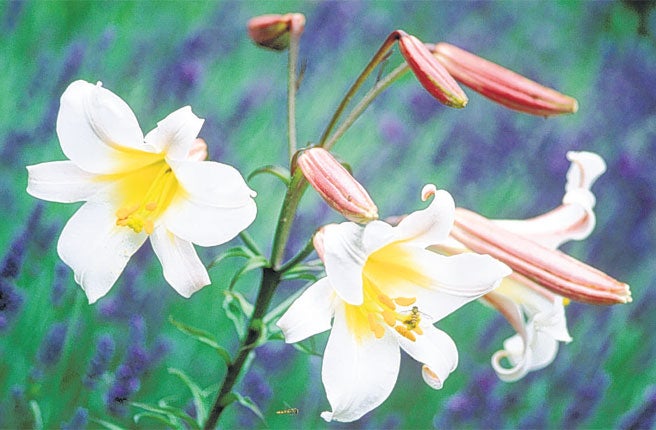Mystery of lily's white delights unveiled at last

Your support helps us to tell the story
From reproductive rights to climate change to Big Tech, The Independent is on the ground when the story is developing. Whether it's investigating the financials of Elon Musk's pro-Trump PAC or producing our latest documentary, 'The A Word', which shines a light on the American women fighting for reproductive rights, we know how important it is to parse out the facts from the messaging.
At such a critical moment in US history, we need reporters on the ground. Your donation allows us to keep sending journalists to speak to both sides of the story.
The Independent is trusted by Americans across the entire political spectrum. And unlike many other quality news outlets, we choose not to lock Americans out of our reporting and analysis with paywalls. We believe quality journalism should be available to everyone, paid for by those who can afford it.
Your support makes all the difference.It has given its name to a hue of white that epitomises saintly purity. Now one of the great mysteries of the lily flower has been solved by scientists who have worked out precisely how it manages to bloom so spectacularly from its tightly enclosed bud.
William Blake once wrote that "the lily white shall in love delight", but a team of Harvard engineers has gone a step further than any botanist in explaining another delight of the flower – the secret of how the lily is able to unfurl its voluminous petals to form its magnificent blooms. Standard explanations have varied. One involved the growth of the midribs running along the length of the sepals, the protective outer coverings enclosing the petals. It was thought that the growth of the midribs caused enough internal stress for the petals to break out of their casing.
A rival theory suggested the two faces of each sepal and petal grow at different rates. The idea here was that if the inner face of each sepal and petal grew faster than the external face, the flower eventually would be forced to bend outward, as is known to occur in other flowers.
But Haiyi Liang and Professor Lakshminarayanan Mahadevan of Harvard have come up with a third explanation, which they said is supported by a detailed mathematical analysis, published in the journal Proceedings of the National Academy of Sciences. They believe the lily is able to bloom from its flower bud by growing at slightly different rates at the rippled edges of its petals. This creates wrinkling at the periphery of the petals which generates the stress within the bud to make it burst open.
"That differences in planar growth strains can lead to shape changes has been known for some time. But showing that it is at work and dominant in lily blooming is new, as our measurements and simple theory show," Professor Mahadevan said.
The scientists studied the Asiatic lily, Lilium casablanca, which has a bud of three outer sepals wrapped around three inner petals. The scientists constructed a computer simulation of the lily's petal and showed that it behaved exactly like the real thing when its edges grow at different rates.
"What is most surprising is that a subject that is so rich in metaphor, the blooming of a flower, has been studied so little from a quantitative perspective," Professor Mahadevan said.
Join our commenting forum
Join thought-provoking conversations, follow other Independent readers and see their replies
Comments